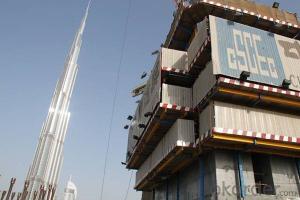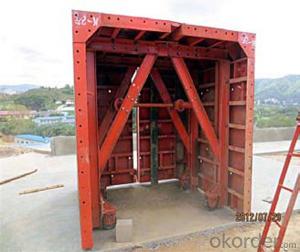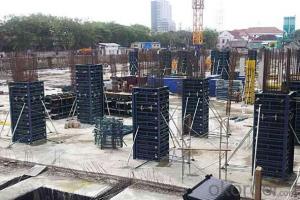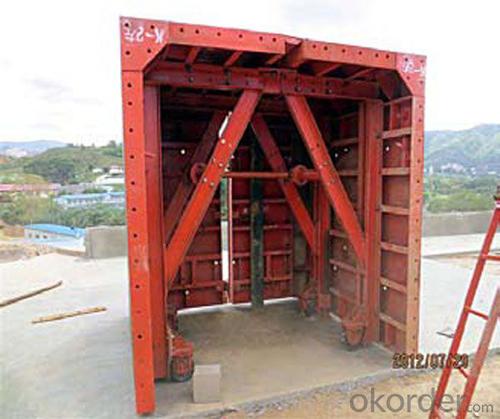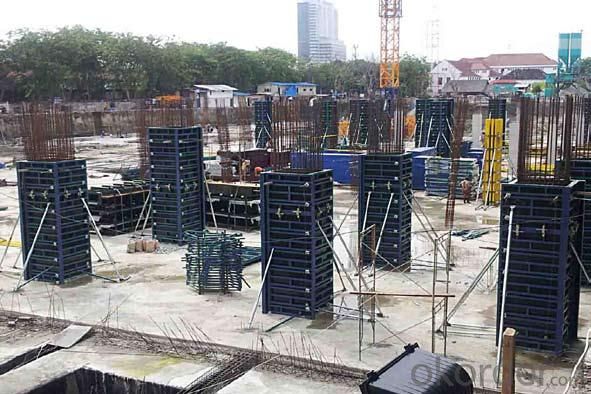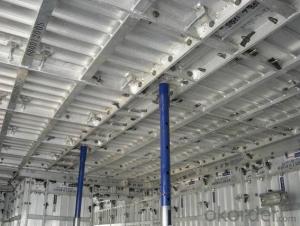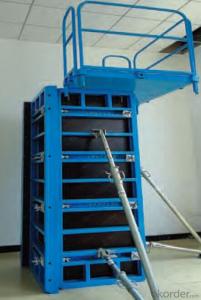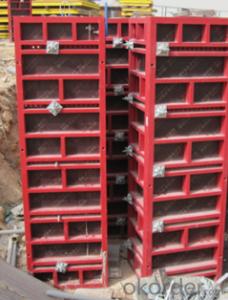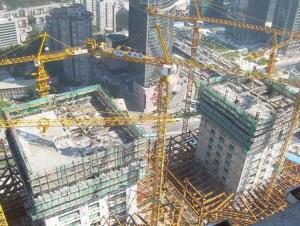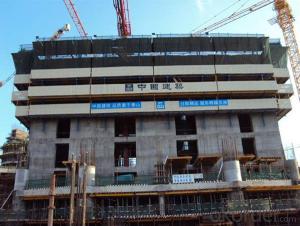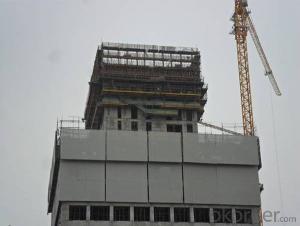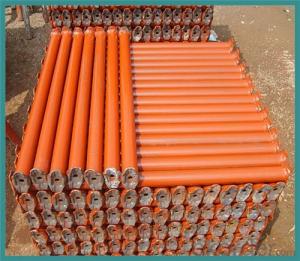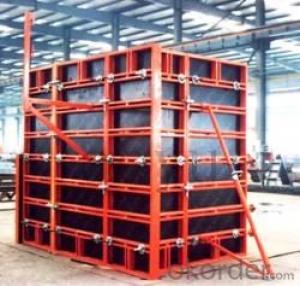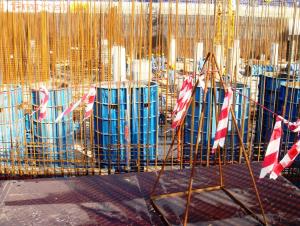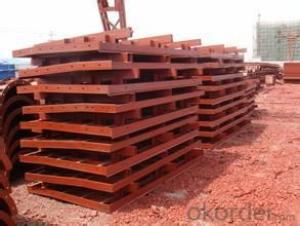Steel Formwork System Fromwork Accessories with Low Price
- Loading Port:
- Tianjin
- Payment Terms:
- TT OR LC
- Min Order Qty:
- 26 m.t
- Supply Capability:
- 1000 m.t/month
OKorder Service Pledge
OKorder Financial Service
You Might Also Like
Steel Formwork System Fromwork Accessories with Low Price
Product pictures:
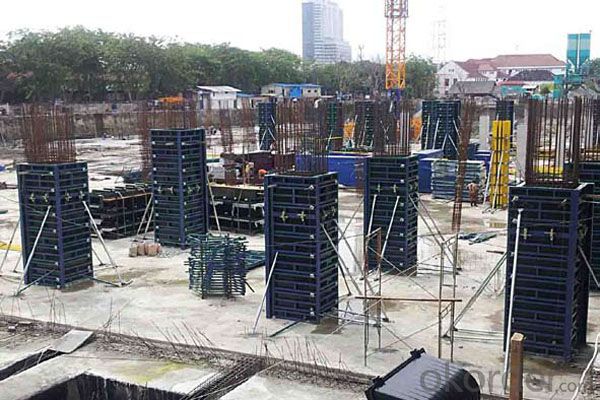
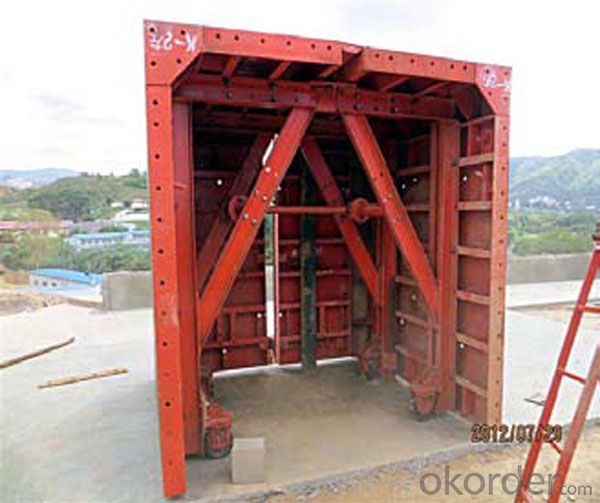
Product description:
Name: | RingLock Scaffold System |
Category: | Scaffolding System |
Material: | Steel (Q235/Q345) |
Size: | D48*3.25mm, etc |
Surface: | Electro Galvanized, Hot Dipped Galvanized, Painted, Powder Coated |
Component: | Standard, Ledger, Diagonal Brace, Bracket, Base Jack, U Head Jack, Etc. |
Application: | Slab Support, Staircase, Stage Plateforms, Bridge Support, Mobile Tower, etc. |
Manufacturer: | OEM is Available |
Items or goods can be manufactured according to your standards. | |
Advantage
* Good loading capacity
* Easy to assemble and dismantle
* Excellent quality for formwork & scaffolding with wide choices
Other scaffolding & formwork products:
(1) Scaffolding System:
(2) Scaffolding Frame & Accessories:
(3) Scaffolding Couplers/Clamps:
(4) Formwork System Scaffolding & Accessories:
Company introduce and advantages:
1. A state-owned company, prestige fi rst.
2. One of Fortune 500 companies in the world. No. 5 in the building material fi eld.
3. Six Sigma strategy , which means no more than 3.4 defects existing among one million of error
possibilities.
4. In line with the business, we launched E-business platform Okorder.com.
5. We are highly recognized by our business partners and clients all over the world and has obtained rapid
development under the spirit of win-win.
FAQ
Why Us?
We are one of the largest construction materials suppliers in China.
We own professional manufacturers with powerful producing capacity.
Extensive and comprehensive quality control system
Excellent products with competitive prices.
Efficient services in pre and after sale.
Full energy with affluent experience team.
- Q: Can steel frame formwork be used in seismic zones?
- Yes, steel frame formwork can be used in seismic zones. Steel is known for its strength and durability, making it suitable for construction in areas prone to earthquakes. It provides the necessary stability and resistance required to withstand seismic forces, ensuring the safety and integrity of the structure.
- Q: How does steel frame formwork affect the overall weight of a construction project?
- Steel frame formwork can significantly affect the overall weight of a construction project. Compared to traditional timber formwork, steel frame formwork is generally much lighter. This reduced weight has several advantages. Firstly, it makes the transportation and handling of the formwork much easier and more efficient. Steel frame formwork can be easily dismantled, transported, and reassembled at different locations, which is especially beneficial for large-scale construction projects that require frequent formwork repositioning. Secondly, the reduced weight of steel frame formwork allows for a quicker and more streamlined construction process. The lighter formwork can be easily lifted and moved by construction workers, allowing for faster installation and removal. This efficiency translates into shorter construction times and reduced labor costs. Additionally, the lighter weight of steel frame formwork has a positive impact on the load-bearing capacity of the overall structure. By reducing the weight of the formwork, the structural design can allocate a greater proportion of the load-bearing capacity to the actual building materials, such as concrete or steel beams. This results in a more robust and efficient construction, with greater durability and safety. Overall, steel frame formwork significantly reduces the overall weight of a construction project, resulting in easier transportation, faster construction, and improved load-bearing capacity. Its lightweight nature contributes to the overall efficiency, cost-effectiveness, and quality of the construction process.
- Q: How does steel frame formwork handle different types of concrete curing temperatures?
- Steel frame formwork is highly versatile and capable of handling different types of concrete curing temperatures. The steel frame provides excellent strength and stability, allowing it to withstand both high and low curing temperatures without warping or distorting. Additionally, the steel material has good thermal conductivity, which helps in efficiently distributing heat during curing. This ensures that the concrete cures evenly and achieves optimal strength and durability regardless of the curing temperature.
- Q: How does steel frame formwork handle different types of concrete admixtures?
- Steel frame formwork is a versatile and durable method for constructing concrete structures, and it can easily handle different types of concrete admixtures. Concrete admixtures are substances that are added to the concrete mix to enhance certain properties or characteristics of the final product. These admixtures can include accelerators, retarders, plasticizers, superplasticizers, air-entraining agents, and many others. Steel frame formwork provides a strong and rigid structure that can withstand the pressure and forces exerted by the concrete mix, regardless of the type of admixture used. The formwork system consists of steel panels, usually with plywood facing, that are connected together with strong and reliable locking mechanisms. This ensures that the formwork remains stable and secure during the pouring and curing process. When it comes to different types of concrete admixtures, steel frame formwork can easily accommodate them. For example, if an accelerator is added to the concrete mix to speed up the curing time, the steel frame formwork can handle the increased early strength development without any issues. Similarly, if a retarder is used to slow down the setting time, the formwork can provide the necessary support and stability during the extended curing period. Steel frame formwork is also compatible with plasticizers and superplasticizers, which are admixtures that improve the workability and flowability of the concrete mix. These admixtures increase the fluidity of the concrete, allowing it to easily flow and fill the formwork. The steel frame provides the necessary strength and rigidity to contain the highly fluid concrete mix and prevent any leakage or deformation. Furthermore, steel frame formwork can also handle air-entraining agents, which are admixtures that introduce tiny air bubbles into the concrete mix. These air bubbles improve the freeze-thaw resistance of the concrete and enhance its durability. The steel frame formwork ensures that the air-entrained concrete remains intact and properly consolidated during the pouring and curing process. In summary, steel frame formwork is well-equipped to handle different types of concrete admixtures. Its strength, stability, and compatibility with various admixtures make it a reliable choice for constructing concrete structures with enhanced properties and characteristics.
- Q: What are the different types of formwork brackets used with steel frame formwork systems?
- There are several types of formwork brackets that are commonly used with steel frame formwork systems. These brackets are designed to support and stabilize the formwork panels during concrete pouring and curing. 1. Adjustable brackets: These brackets are used to provide height adjustment for the formwork panels. They can be easily adjusted to accommodate different heights and angles, allowing for flexibility in formwork construction. 2. Corner brackets: As the name suggests, corner brackets are used to support the formwork panels at corners. They are specifically designed to provide stability and reinforcement to the corners of the formwork system, ensuring a strong and secure structure. 3. Beam brackets: Beam brackets are used to support and align the beam formwork panels. They are typically used in conjunction with adjustable brackets to ensure proper alignment and support for the beam formwork. 4. Wall brackets: Wall brackets are used to support the formwork panels for vertical walls. They are designed to provide stability and reinforcement to the wall formwork, preventing any movement or collapse during the concrete pouring process. 5. Slab brackets: Slab brackets are used to support the formwork panels for horizontal slabs. These brackets are typically adjustable, allowing for precise leveling and alignment of the formwork panels. 6. Column brackets: Column brackets are used to support the formwork panels for columns. They are designed to provide stability and reinforcement to the column formwork, ensuring a strong and durable structure. Overall, these different types of formwork brackets are essential components of steel frame formwork systems, providing the necessary support and stability for the formwork panels during construction.
- Q: Can steel frame formwork be used for both straight and inclined concrete elements?
- Yes, steel frame formwork can be used for both straight and inclined concrete elements. Steel frame formwork is versatile and can be easily adjusted and assembled to accommodate various shapes and angles. It provides stability and strength to support the weight of the concrete during pouring and curing. The steel frame can be customized to form straight walls, columns, beams, and slabs, as well as inclined or curved elements. Additionally, the steel frame formwork allows for easy removal and reusability, making it a cost-effective solution for construction projects that require both straight and inclined concrete elements.
- Q: What are the different types of formwork wedges used in steel frame formwork systems?
- There are several different types of formwork wedges that are commonly used in steel frame formwork systems. These wedges are used to secure the formwork panels together and provide stability to the overall structure. 1. Flat Wedges: These are basic wedges that have a flat surface and are widely used in steel frame formwork systems. They are typically made of steel or plastic and are inserted into the formwork joints to hold the panels firmly in place. 2. Tapered Wedges: These wedges have a tapered shape, with one end wider than the other. The taper allows for easy insertion and removal of the wedge, making them convenient to use. Tapered wedges are commonly used in formwork systems where quick assembly and disassembly is required. 3. Slotted Wedges: Slotted wedges have a slot or groove running along their length. This slot allows for easy adjustment of the wedges, making it possible to fine-tune the alignment of the formwork panels. Slotted wedges are often used in formwork systems that require precise positioning. 4. U-Shaped Wedges: U-shaped wedges have a curved shape, resembling the letter "U". These wedges are designed to provide a tight grip on the formwork panels, ensuring maximum stability. U-shaped wedges are commonly used in heavy-duty formwork systems where strong holding power is required. 5. Adjustable Wedges: As the name suggests, adjustable wedges can be adjusted to different heights, allowing for flexibility in formwork construction. These wedges typically have a threaded design, which enables easy height adjustment. Adjustable wedges are often used in formwork systems where varying heights of formwork panels are required. Overall, the choice of formwork wedges depends on the specific requirements of the construction project. The type of wedge used will vary based on factors such as the formwork system being used, the load-bearing capacity required, and the desired level of precision in formwork assembly.
- Q: How does steel frame formwork compare to other types of formwork in terms of speed of construction?
- Steel frame formwork is renowned for its exceptional speed of construction in comparison to other formwork types. Its lightweight nature, ease of assembly, and high reusability are primarily responsible for this advantage. In contrast to traditional timber formwork, which necessitates extensive cutting and shaping, steel frame formwork is supplied in pre-fabricated panels that can be effortlessly and swiftly assembled on-site. This considerably reduces the time and effort required for formwork installation. Additionally, steel frame formwork is designed to be easily adjustable and adaptable to various shapes and sizes, thereby further enhancing its construction speed. Compared to alternative formwork types like aluminum or plastic, steel frame formwork offers superior strength and durability. This enables faster concrete pouring and stripping, as the steel frame can withstand the pressure and weight of the concrete without distorting or collapsing. Conversely, other formwork types may require additional time and effort for reinforcement or support, which can impede the construction process. Moreover, steel frame formwork is highly reusable, making it a cost-effective choice for projects with repetitive layouts or multiple casting cycles. The durability of steel ensures that it can endure multiple uses, reducing the need for frequent replacements. This not only saves time and money but also contributes to a more sustainable construction process. To summarize, steel frame formwork excels in terms of construction speed when compared to other formwork types. Its lightweight nature, ease of assembly, adaptability, and high reusability make it the preferred choice for projects that demand efficient and rapid construction.
- Q: Can steel frame formwork be used for bridge and infrastructure construction?
- Bridge and infrastructure construction can indeed utilize steel frame formwork. This type of formwork is versatile and long-lasting, providing effective support for concrete during the construction process. Its ability to withstand heavy loads and maintain stability makes it particularly suitable for large-scale projects like bridges and infrastructure. There are numerous advantages to using steel frame formwork in bridge and infrastructure construction. Firstly, it enables quick and precise assembly, guaranteeing a high level of accuracy and quality in concrete placement. This precision is crucial for ensuring the structural integrity of bridges, where exact alignment is essential. Secondly, steel frame formwork is highly reusable, offering both cost-effective and environmentally-friendly benefits. With proper maintenance and care, the same formwork can be used for multiple projects, reducing the need for new materials and minimizing waste. Furthermore, steel frame formwork provides exceptional strength and stability, making it ideal for supporting large spans and heavy loads, both of which are commonly encountered in bridge and infrastructure construction. The steel frames are capable of withstanding the pressure exerted by wet concrete, ensuring the overall stability and durability of the structure. Additionally, steel formwork systems offer design flexibility and can be customized to meet the specific requirements of each project. This allows engineers and contractors to adapt the formwork to accommodate the unique shape and size of the bridge or infrastructure being constructed. In conclusion, steel frame formwork is a dependable and efficient solution for bridge and infrastructure construction. Its strength, durability, reusability, and flexibility make it an ideal choice for these types of projects, guaranteeing the successful completion of complex structures with high-quality concrete placement.
- Q: Can steel frame formwork be used for sports stadiums?
- Yes, steel frame formwork can be used for sports stadiums. Steel frame formwork provides a strong and durable structure that can withstand the weight and load requirements of a sports stadium. It is commonly used in large-scale construction projects, including stadiums, due to its ability to support heavy concrete pouring and provide a solid foundation for the overall structure.
Send your message to us
Steel Formwork System Fromwork Accessories with Low Price
- Loading Port:
- Tianjin
- Payment Terms:
- TT OR LC
- Min Order Qty:
- 26 m.t
- Supply Capability:
- 1000 m.t/month
OKorder Service Pledge
OKorder Financial Service
Similar products
Hot products
Hot Searches
Related keywords
